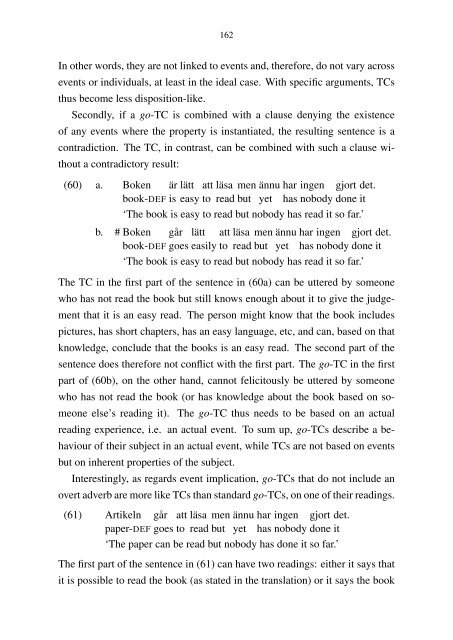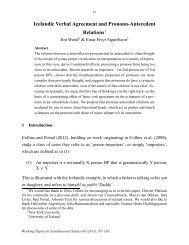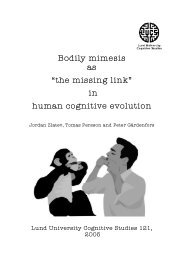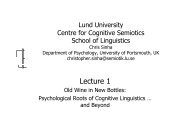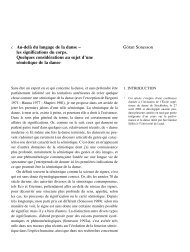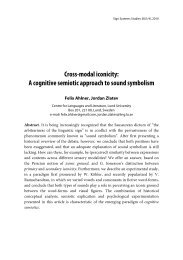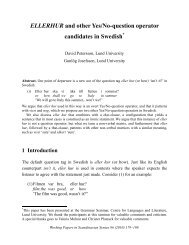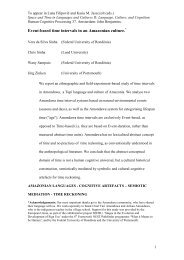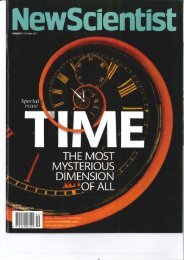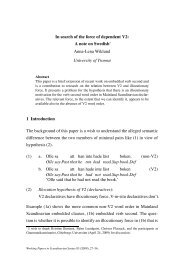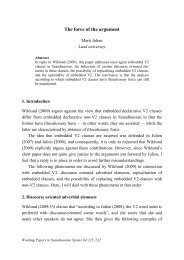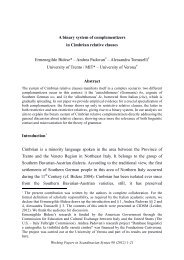Eva Klingvall On non-copula Tough Constructions in Swedish (PDF ...
Eva Klingvall On non-copula Tough Constructions in Swedish (PDF ...
Eva Klingvall On non-copula Tough Constructions in Swedish (PDF ...
You also want an ePaper? Increase the reach of your titles
YUMPU automatically turns print PDFs into web optimized ePapers that Google loves.
162In other words, they are not l<strong>in</strong>ked to events and, therefore, do not vary acrossevents or <strong>in</strong>dividuals, at least <strong>in</strong> the ideal case. With specific arguments, TCsthus become less disposition-like.Secondly, if a go-TC is comb<strong>in</strong>ed with a clause deny<strong>in</strong>g the existenceof any events where the property is <strong>in</strong>stantiated, the result<strong>in</strong>g sentence is acontradiction. The TC, <strong>in</strong> contrast, can be comb<strong>in</strong>ed with such a clause withouta contradictory result:(60) a. Boken är lätt att läsa men ännu har <strong>in</strong>gen gjort det.book-DEF is easy to read but yet has nobody done it‘The book is easy to read but nobody has read it so far.’b. # Boken går lätt att läsa men ännu har <strong>in</strong>gen gjort det.book-DEF goes easily to read but yet has nobody done it‘The book is easy to read but nobody has read it so far.’The TC <strong>in</strong> the first part of the sentence <strong>in</strong> (60a) can be uttered by someonewho has not read the book but still knows enough about it to give the judgementthat it is an easy read. The person might know that the book <strong>in</strong>cludespictures, has short chapters, has an easy language, etc, and can, based on thatknowledge, conclude that the books is an easy read. The second part of thesentence does therefore not conflict with the first part. The go-TC <strong>in</strong> the firstpart of (60b), on the other hand, cannot felicitously be uttered by someonewho has not read the book (or has knowledge about the book based on someoneelse’s read<strong>in</strong>g it). The go-TC thus needs to be based on an actualread<strong>in</strong>g experience, i.e. an actual event. To sum up, go-TCs describe a behaviourof their subject <strong>in</strong> an actual event, while TCs are not based on eventsbut on <strong>in</strong>herent properties of the subject.Interest<strong>in</strong>gly, as regards event implication, go-TCs that do not <strong>in</strong>clude anovert adverb are more like TCs than standard go-TCs, on one of their read<strong>in</strong>gs.(61) Artikeln går att läsa men ännu har <strong>in</strong>gen gjort det.paper-DEF goes to read but yet has nobody done it‘The paper can be read but nobody has done it so far.’The first part of the sentence <strong>in</strong> (61) can have two read<strong>in</strong>gs: either it says thatit is possible to read the book (as stated <strong>in</strong> the translation) or it says the book


